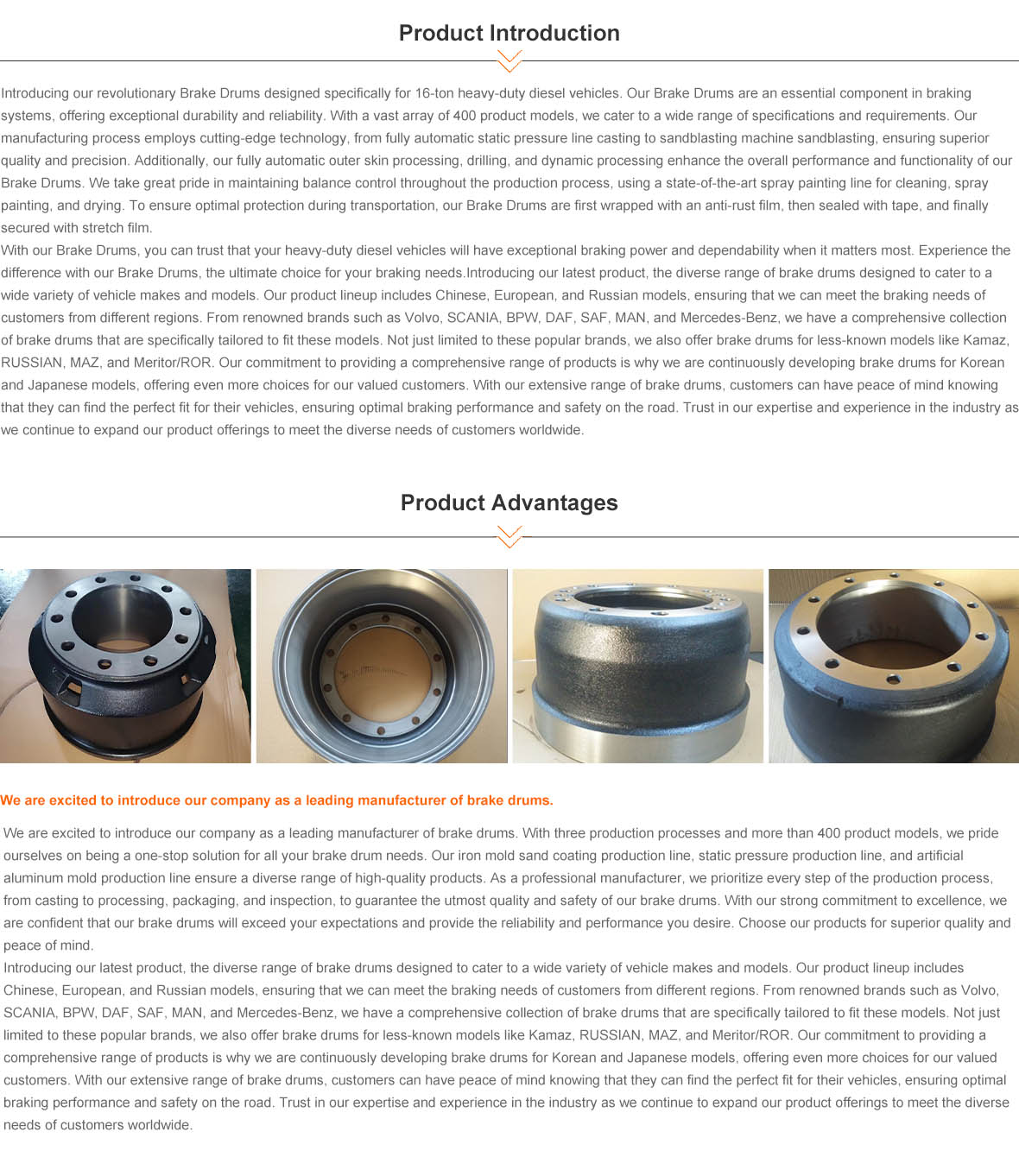what are electric drum brakes
Understanding Electric Drum Brakes A Comprehensive Overview
Electric drum brakes have emerged as a vital component in modern automotive engineering, providing an effective solution for vehicle stopping power. This innovative braking system integrates electrical components with traditional drum brake design, offering enhanced performance, safety, and reliability.
What Are Electric Drum Brakes?
Electric drum brakes operate on the same fundamental principles as conventional drum brakes, utilizing friction to slow down or stop the vehicle. However, the key difference lies in the activation mechanism. Instead of hydraulic pressure being applied to the brake shoes through a master cylinder, electric drum brakes use electric motors or solenoids to exert force on the brake shoes. This mechanism allows for more precise control and faster response times, particularly beneficial in various driving conditions.
Components of Electric Drum Brakes
Electric drum brakes consist of several critical components
1. Brake Drum The circular housing that spins with the wheel. When the brakes are applied, the brake shoes press against the inner surface of the drum, creating friction that slows the vehicle.
2. Brake Shoes Curved pieces that press against the drum's interior. In electric drum brakes, these shoes are actuated by electric forces rather than hydraulic pressure.
3. Electric Actuator The core component that enables the electric actuation of the brake shoes. This actuator can be a solenoid or a small electric motor that converts electrical energy into mechanical movement.
4. Control System The electronic unit that communicates with the vehicle's braking system to activate the electric actuator when the brake pedal is engaged.
Advantages of Electric Drum Brakes
what are electric drum brakes

1. Precision and Responsiveness Electric drum brakes offer greater precision in braking, which can enhance vehicle control, especially during emergency stops. The immediate response time provides drivers with reassurance that the vehicle will stop effectively when needed.
2. Reduced Maintenance Compared to traditional hydraulic systems, electric drum brakes have fewer moving parts that wear out or require fluid replacement. This reduction in wear and maintenance needs can lead to lower long-term costs for vehicle owners.
3. Integration with Modern Technologies Electric drum brakes can be seamlessly integrated with advanced driver-assistance systems (ADAS), such as anti-lock braking systems (ABS) and electronic stability control (ESC), leading to improved safety and handling.
4. Performance Under Load For vehicles designed for towing or carrying heavy payloads, electric drum brakes provide consistent braking performance, as they can handle increased friction and heat better than traditional systems.
5. Efficiency Electric brakes can lead to improved energy efficiency, particularly in hybrid and electric vehicles, where regenerative braking systems can work in conjunction with electric drum brakes to enhance the overall braking process while recapturing energy.
Applications of Electric Drum Brakes
Electric drum brakes are predominantly found on trailers and heavier vehicles, such as buses and trucks, where stopping power and precision are paramount. They are also gradually being adopted in passenger vehicles, particularly those equipped with hybrid or electric powertrains, where efficiency and integrated systems are essential.
Challenges and Considerations
Despite their advantages, electric drum brakes do face some challenges. The need for a reliable power supply is crucial; any electrical failure could lead to decreased braking performance. Additionally, the initial costs of installation can be higher than traditional systems, although the long-term savings on maintenance may offset this.
Conclusion
In summary, electric drum brakes represent a significant advancement in braking technology, combining the traditional principles of drum braking with the benefits of electric actuation. Their precision, lower maintenance requirements, and compatibility with modern vehicle systems make them an attractive choice for manufacturers and consumers alike. As automotive technology continues to evolve, it is likely that electric drum brakes will play an increasingly critical role in enhancing vehicle safety and performance. Understanding these systems can empower vehicle owners to make informed decisions about their braking solutions and investments.
-
Truck Drum Brake Spring Replacement ProcedureNewsAug.22,2025
-
Evolution Of Brake Drum Function Designs In Automotive HistoryNewsAug.22,2025
-
Drum Brake Motor Thermal Management SolutionsNewsAug.22,2025
-
Essential tools for brakes and drums repair jobsNewsAug.22,2025
-
Trailer Drum Brake Self-Adjusting Mechanisms ExplainedNewsAug.22,2025
-
Brake Drum Types in Vintage Auto RestorationNewsAug.22,2025
-
Rear Drum Brakes Maintenance TipsNewsAug.04,2025


